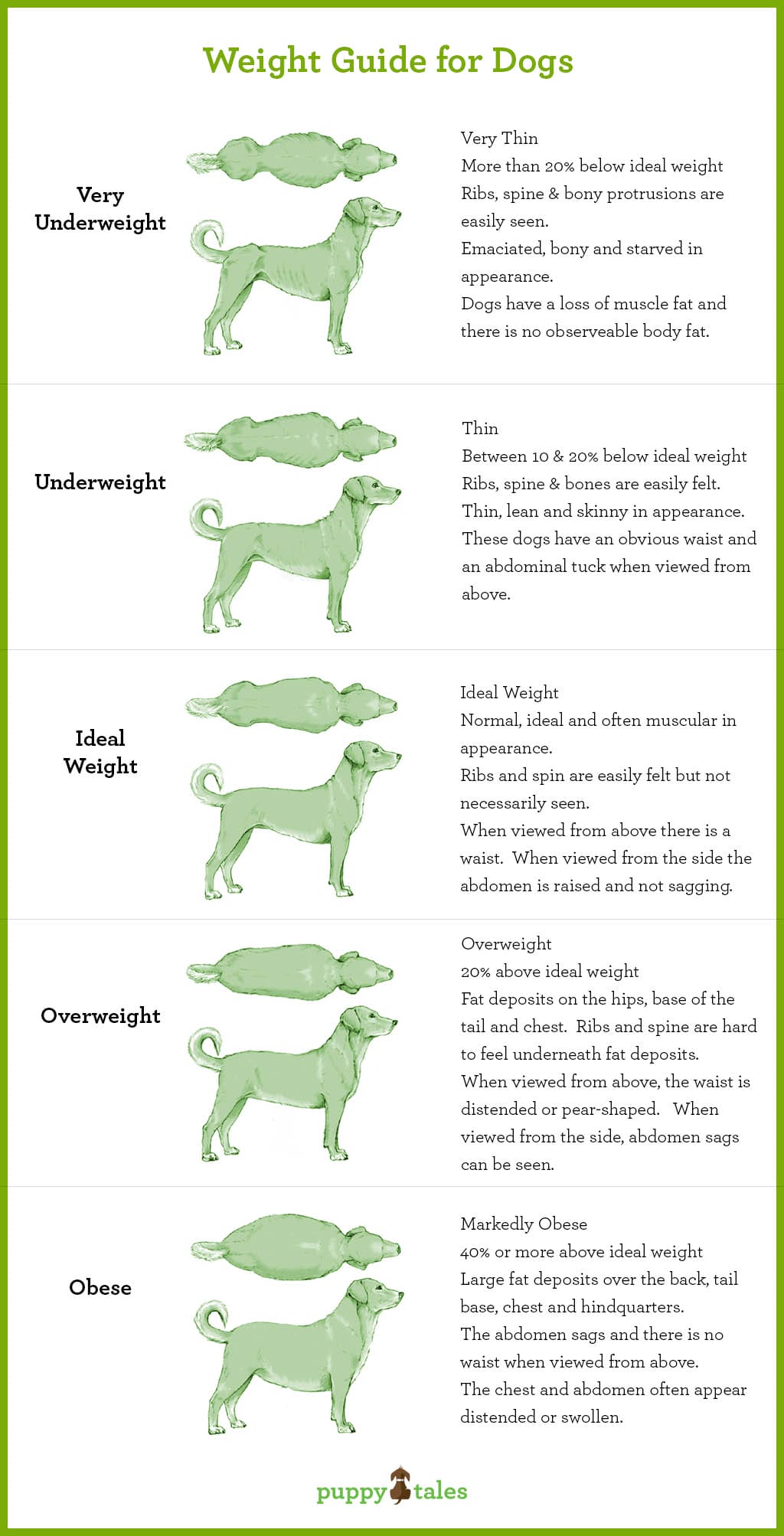

Your veterinarian can then use this BCS to establish an ideal weight for your dog and give you a reference point to track weight loss goals and progress.

Consult your veterinarian, as they can assess your dog’s body condition score (BCS) on a 9 point scale to help you understand your starting point. When it comes to helping a dog lose weight, the first step is determining what their ideal body weight should be. Whether you are trying to get your overweight dog back down to a healthy weight or prevent your dog from becoming overweight in the first place, here are some simple steps that you can follow to help you and your dog meet your goals. To ensure that our dogs are maintaining a healthy weight, we need to focus on choosing an appropriate amount of a quality food, promoting exercise, monitoring weight changes, and adjusting the amount of food that they receive based on those changes. This means obesity is one of the few conditions that plague our pets that we as owners can have some control over. In an otherwise healthy dog, weight gain is often due to an imbalance between the amount of calories they are eating and the amount that they are burning in their daily activity. Some diseases can lead to an increased risk of obesity in dogs, which is why it is always important to consult your veterinarian so they can examine your dog before recommending any dietary changes. Weight gain in our four-legged companions can occur for a variety of reasons. Fortunately, losing weight can help these patients reduce that risk and even reverse some of the effects of these conditions.
#PET WEIGHT CONDITIONED CHART SKIN#
Obesity is a major concern in dogs because it can increase their risk of getting a variety of serious medical conditions: diabetes mellitus, joint damage and arthritis, kidney and pancreatic disease, cardiovascular issues, bladder, and urinary tract disease, skin problems, and cancer. that are overweight or obese (56%) surpassed the number of dogs at an appropriate weight (44%), and this stunning statistic continues to rise each year. As of 2020, the number of dogs in the U.S. Excessive weight gain has become the most common preventable disease seen in dogs throughout the United States.


 0 kommentar(er)
0 kommentar(er)
